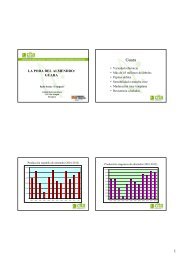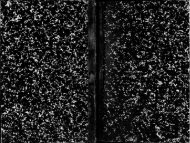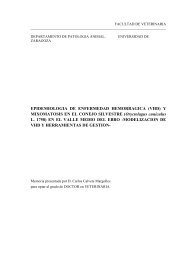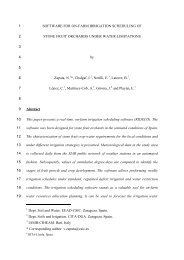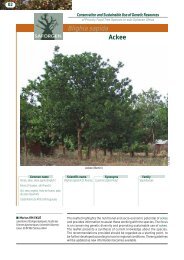1 A Recursive Dynamic Computable General Equilibrium Model For ...
1 A Recursive Dynamic Computable General Equilibrium Model For ...
1 A Recursive Dynamic Computable General Equilibrium Model For ...
Create successful ePaper yourself
Turn your PDF publications into a flip-book with our unique Google optimized e-Paper software.
⎡ B ⎤<br />
AREA = 1 −<br />
⎢<br />
ρ<br />
⎣C<br />
+ RENT ⎥<br />
(10)<br />
⎦<br />
where AREA is the levels variable for the change in “accumulated area” of land in Spain<br />
relative to the asymptote (a ratio which ranges between 0 and 1). The parameters B, C and<br />
ρ are read in from a parameter file with estimated values 137.830, 154.367 and 2.272,<br />
respectively. The variable ‘RENT’ is the levels real price of land, which is calibrated given<br />
knowledge of the aggregated AREA variable and the parameters.<br />
The update for the levels variable RENT is based on the corresponding percentage<br />
change linear variable (plandreal) in the model, which is a function of changes in the<br />
aggregated price of land in Spain, p1ld_m, and changes in the consumer price index,<br />
p3tot_h. In percentage terms:<br />
plandreal = pldm _ i − p3tot<br />
_ h<br />
(11)<br />
Given changes in the real land price from the CGE model solution, and knowledge<br />
of the parameter values B, C and ρ, the flexible land supply calculates corresponding<br />
changes in land supply. Since the model solves in percentage changes, validating the<br />
implementation of the estimated land supply function in ORANI is given by checking that<br />
calculated land supply elasticities from the CGE model 16 from small incremental shocks are<br />
close to the initial single point elasticities calculated from the expression:<br />
E<br />
S<br />
∂ Rent<br />
bˆ<br />
⋅ pˆ<br />
⋅ Rent<br />
= (12)<br />
∂<br />
*<br />
pˆ<br />
Area<br />
C • =<br />
ˆ<br />
pˆ<br />
Rent AreaC<br />
( C0<br />
+ RentC<br />
) 0<br />
C b<br />
25<br />
C<br />
ˆ *<br />
( ˆ<br />
p<br />
C + Rent<br />
− ˆ )<br />
where the circumflex over the parameters indicate the econometrically estimated values.<br />
5.3 Introducing a Multi-Stage CET Function into the Land Market.<br />
In the standard ORANI model, Figure 10 shows how a CET function is introduced<br />
to model aggregate land allocation (variable x1lnd_i) across primary agricultural industries<br />
‘i’ (variable q1lnd(i)). 17 The inclusion of a constant elasticity of transformation (CET)<br />
function captures the imperfect substitutability between different land types (i.e., land use<br />
16 The supply elasticities are simply calculated as the ratio of the percentage change variables<br />
x1lnd_i/plandreal<br />
17 Only the primary agricultural sectors use the land factor in ORANI-DYN.



